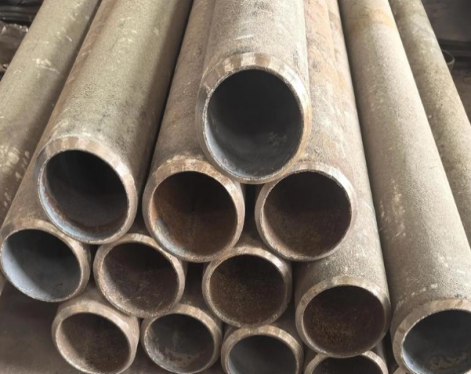Steel sheet piles have the advantages of strong bearing capacity, convenient construction, and environmental sustainability. They are widely used in fields such as foundation engineering, environmental engineering, water conservancy engineering, and ocean engineering. This article will explore the application of steel piling in seawalls.
In the field of infrastructure construction, steel pilings have a history of more than 100 years since their pioneering application in Europe in 1908. As an important construction material in the field of modern foundation and underground engineering, steel sheet piles can meet the construction requirements of many engineering fields such as traditional water conservancy, civil engineering, road traffic engineering, environmental pollution remediation, and sudden disaster control.
This metal revetment is an important hydraulic structure in the sea reclamation project. As a wave-proof building, seawalls not only withstand wave action, but also block tides. Structurally, the sheet pile seawall consists of two parts: a tide-proof and anti-seepage soil body and a wave-proof structure.

By following these steps, contractors can effectively construct a sheet pile seawall that provides durable and reliable shoreline protection for coastal areas.
1.What is a steel sheet pile seawall?
Steel sheet pile seawall is a dam built from sheet pile, a metal material, to resist waves.Steel sheet piles are steel structures with linkage devices on their edges and can be freely combined to form a continuous and tight retaining soil or water retaining wall. Steel sheet piles are used in almost the entire building foundation construction industry due to their unique characteristics such as high strength, light weight, good water-stopping properties, strong durability, high construction efficiency, and small footprint.Types of steel sheet piles: according to different production methods, this metal material has hot rolled and cold formed sheet piling. according to different shapes, it can be divided into Z-type, H-type and U-type.In the field of infrastructure construction, steel pilings have a history of more than 100 years since their pioneering application in Europe in 1908. As an important construction material in the field of modern foundation and underground engineering, steel sheet piles can meet the construction requirements of many engineering fields such as traditional water conservancy, civil engineering, road traffic engineering, environmental pollution remediation, and sudden disaster control.
This metal revetment is an important hydraulic structure in the sea reclamation project. As a wave-proof building, seawalls not only withstand wave action, but also block tides. Structurally, the sheet pile seawall consists of two parts: a tide-proof and anti-seepage soil body and a wave-proof structure.

2.Sheet pile seawall construction
Constructing a bulkhead involves several key steps to ensure its effectiveness in providing shoreline protection. Here's an overview of the construction process:(1)Site Preparation
Before construction begins, the site needs to be prepared. This involves clearing vegetation, removing any obstacles or debris, and grading the area to create a stable foundation for the seawall.(2)Design and Planning
The design of the maritime structures should be carefully planned to meet the specific requirements of the site, taking into account factors such as wave action, soil conditions, and environmental regulations. Engineers will typically design the seawall to withstand the forces exerted by waves and water pressure while also considering factors like corrosion resistance and longevity.(3)Sheet Pile Installation
Sheet piles are typically made of steel, vinyl, or concrete, and they are driven vertically into the ground to form a continuous barrier along the shoreline. This can be done using various methods, including vibratory hammers, hydraulic presses, or traditional pile driving equipment . The piles are interlocked to form a continuous wall, creating a barrier against erosion and wave action.(4)Anchoring and Tiebacks
In some cases, anchor systems or tiebacks may be installed to provide additional stability to the seawall. These are typically installed behind the seawall and are connected to the sheet piles to help resist lateral forces and prevent overturning.(5)Backfilling and Grading
Once the sheet piles are in place, the area behind the seawall is backfilled with suitable material, such as sand or gravel, to provide additional support and stability. The backfill material is typically compacted to ensure proper drainage and prevent settlement.(6)Armor Stone or Concrete Cap
Depending on the design and requirements of the seawall, an armor stone or concrete cap may be installed on top of the sheet piles to provide additional protection against wave action and erosion. These caps also help to distribute the forces exerted by waves more evenly along the seawall.(7)Monitoring and Maintenance
After construction, regular monitoring and maintenance are essential to ensure the seawall remains effective in protecting the shoreline. This may include inspections for signs of damage or erosion, repairs as needed, and ongoing maintenance to keep the seawall in optimal condition.By following these steps, contractors can effectively construct a sheet pile seawall that provides durable and reliable shoreline protection for coastal areas.









